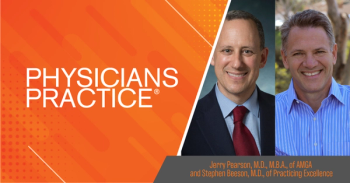
Trademark law basics
More businesses recognize the importance of building their legacies, but what’s the point of registering your mark?
Healthcare is one of the most stable industries in America despite discussions of a global recession. Because of this, many unique players have entered the healthcare space who are not traditional clinicians. As providers and entrepreneurs begin to think about starting a business, developing a brand, and protecting it, understanding trademarks and some hurdles faced by healthcare organizations will better equip healthcare businesses.
What is a trademark?
- Trademarks signify the value and quality of a brand in the marketplace.
- Trademarks protect the intellectual property and use of a specific idea or symbol and distinguish a brand.
- A trademark is any word, name, or symbol used in commerce to identify a business’s product or merchandise.
- Trademark rights prevent others from using a confusingly similar mark, but don’t prevent others from making or selling the same goods and services under a clearly distinct mark.
- Trademarks used in interstate / foreign commerce undergo registration through the U.S. Patent and Trademark Office (USPTO). This process provides federal protection.
Marks registered and service marks:
- Any time you claim rights in a mark, you may use the “TM” (trademark) or “SM” (service mark) designation to alert the public to your claim, regardless of whether you have applied for registration of the mark. The TM mark means to use in commerce.
- Once the USPTO registers the mark, the registration symbol “®” is appropriate. This is the only designation that alerts the world that your mark has superior rights to others and affords you legal protection. Brands cannot use the registration symbol while an application is pending. Remember, you may only use a mark in connection with the goods and/or services listed in your federal trademark registration.
- A service mark, denoted by the symbol ℠, offers the same protection as a trademark but identifies and distinguishes services rather than products. The term “trademark” or “mark” includes a service mark as well. Trademarks are synonymous with a brand name or design that connects the brand to its services or products.
How does a trademark distinguish from a patent or copyright?
- Patents and copyrights protect the commercial rights of inventors and creators of artistic or scientific works; a trademark or service mark prevents unfair competition.
- Trademarks protect a brand’s competitors from stealing the brand’s identity or using a name or symbol so similar that it could cause confusion in the marketplace; trademarks also protect consumers from deception.
Challenges faced by healthcare trademarks
- Trademarks should be distinctive and unique. Unfortunately, many healthcare trademarks are descriptive trademarks and do not offer strong protection. Descriptive marks are those trademarks or service marks that only describe the products or services to which they are applied; they do not identify and distinguish the source of products or services.
- Healthcare organizations are many times named with geographic designations, the names of famous individuals, or even family names.As a result, there is a risk that these types of marks will not be granted trademark protection.
- Instead, organizations should reach out to their attorney at the beginning of starting their business to help them pick a name that can be secured with a trademark.
- Businesses should consider adding an arbitrary, fanciful, or unique name to their brand to distinguish it from other similarly situated services.
Rules from the USPTO
- The USPTO does not allow the trademarking of generic terms that are used to describe a type of company, product, or service.
- Registered trademarks may not be “immoral, deceptive or scandalous matter,” or “disparage or falsely suggest a connection with persons, institutions, beliefs or national symbols.” Nor may they be “merely descriptive,” “deceptively descriptive,” “primarily geographically descriptive,” “primarily merely a surname,” or “functional.”
- The more distinctive your business, product, or service name, the more likely it will be available for you to trademark.
Our process at Dike Law Group for trademarks:
- A comprehensive trademark search is the only way to review the variations of your desired name or logo. If your desired name or logo is in use in another state; a common law trademark; or an abandoned trademark, we cannot trademark it. Thus, it's best to have a report created by an attorney and a legal opinion on whether you can proceed with your desired name without infringing on anyone else’s mark and whether your desired name or mark is a suitable candidate for trademark registration.
- After ensuring the trademark is available, we register the mark with the USPTO.
- Finally, we like to monitor our marks to ensure that the trademark we register is not used and infringed on.
Doris Dike, Esq. is the Managing Partner of Dike Law Group, a business lawyer for healthcare clients, she works with doctors, podiatrists, nurses, ERs, urgent cares, med spas, hospitals, small independent clinics, rural hospitals, and surgery centers. She can be reached at
Newsletter
Optimize your practice with the Physicians Practice newsletter, offering management pearls, leadership tips, and business strategies tailored for practice administrators and physicians of any specialty.








